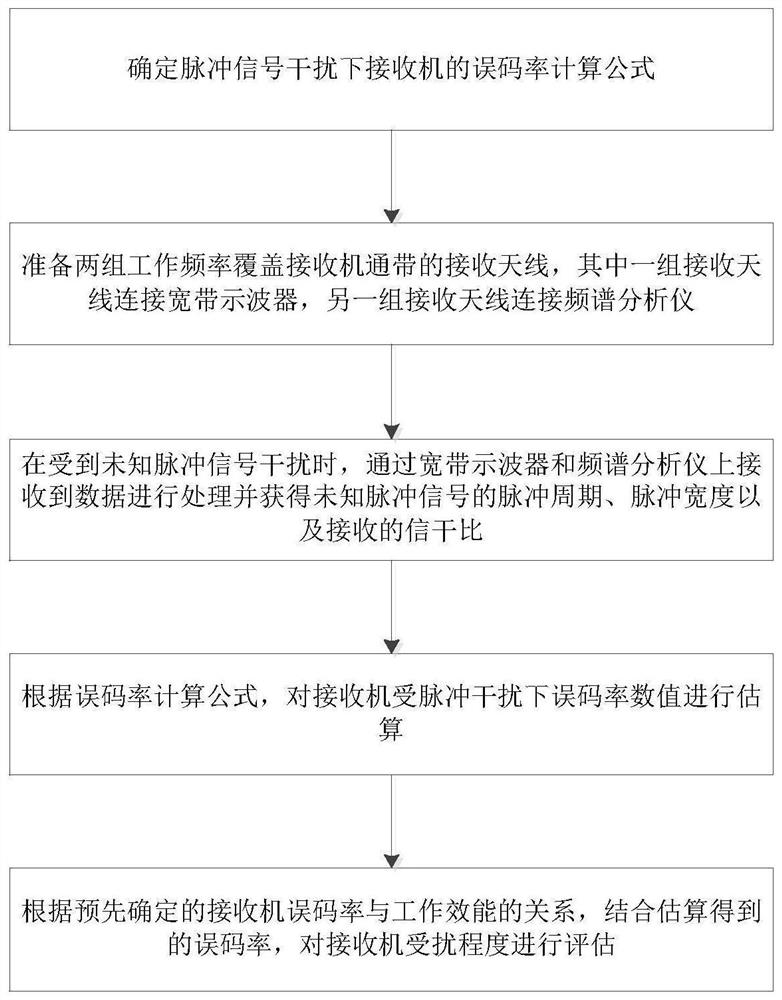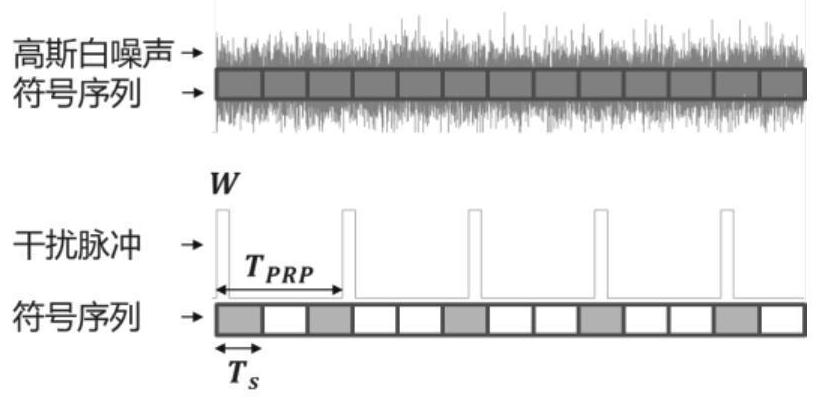Receiver pulse signal interference evaluation method based on error rate
A pulse signal and receiver technology, applied in receiver monitoring, transmission monitoring, electrical components, etc., can solve the difference between pulse signal interference and noise interference, complex and variable pulse signal parameters and modulation methods that have not been studied in depth and other issues, to achieve an objective, fast, and highly credible evaluation process
- Summary
- Abstract
- Description
- Claims
- Application Information
AI Technical Summary
Problems solved by technology
Method used
Image
Examples
Embodiment Construction
[0053] The technical solution of the present invention will be further described in detail below in conjunction with the accompanying drawings, but the protection scope of the present invention is not limited to the following description.
[0054] Such as figure 1 As shown, a method for evaluating receiver pulse signal interference based on bit error rate includes the following steps:
[0055] S1. Determine the formula for calculating the bit error rate of the receiver under pulse signal interference;
[0056] Such as figure 2Shown is a typical receiver - superheterodyne receiver basic composition block diagram. The block diagram is mainly composed of three parts: receiving antenna, frequency mixing circuit and demodulation circuit. The useful signal enters the receiver through the receiving antenna and band-pass filter, moves to the intermediate frequency part (usually a fixed value) after being mixed, and then moves to the base frequency through down-conversion, and can ...
PUM
 Login to View More
Login to View More Abstract
Description
Claims
Application Information
 Login to View More
Login to View More - R&D
- Intellectual Property
- Life Sciences
- Materials
- Tech Scout
- Unparalleled Data Quality
- Higher Quality Content
- 60% Fewer Hallucinations
Browse by: Latest US Patents, China's latest patents, Technical Efficacy Thesaurus, Application Domain, Technology Topic, Popular Technical Reports.
© 2025 PatSnap. All rights reserved.Legal|Privacy policy|Modern Slavery Act Transparency Statement|Sitemap|About US| Contact US: help@patsnap.com



